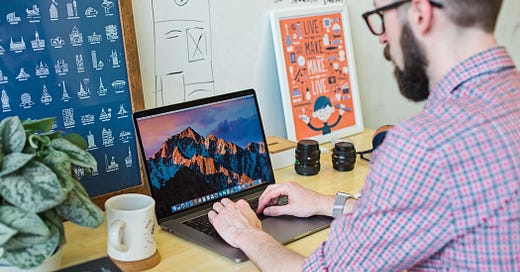Becoming a Senior Product Designer
Becoming a Senior Product Designer may be different from you think.
This post is written based on my own experience and some of the things mentioned below may not apply to you and your journey as a designer. This is also written from the perspective of a Product Designer but may also apply to other design fields.

We, as modern human beings, work for 30–40 years. Decades passed, design changed, the industry changed, the world changed. If you have a bad habit and you practice said habit everyday, you aren’t as good as your neighbouring designer who keeps pushing themselves forward everyday to be better.
Good habits become skills and I wanted to share some of the skills I’ve learned while progressing towards seniority as a Product Designer.
1. Learnability.
I have met so many people, despite their job titles and experience, who have stopped learning. This is not about design principles, or colour theory, things that you can learn in schools or courses but new tools, frameworks, other fields, what’s happening in the world.
One example is the tools you use to design. As a junior, you learn the industry-standard tools and start creating with them, you may have a mentor to teach you how to use the tools. But as you progress, tools change, and no one is gonna be there to handhold you through a new tool forever. The tech industry is moving so fast that it is a very important skill to keep up with and to learn quickly. Otherwise, you’ll be left behind.
Besides tools, learn about new processes, new workflows, things that work for your team logistically and financially. Moreover, learn about development, nature, politics, science, art (not necessarily in this order). Become a unicorn. Get out of your comfort zone and your own head. Learn about everything and anything. Find how you learn best and learn more, everyday. Learn from other people. Learn so you get inspired and also you can inspire others.
Being a senior means curiosity and self-education.
2. Adaptability.
Learning would mean nothing if you can’t adapt your knowledge to your situations. When we get started, we all have to follow guidelines and rules created by their lecturers or curriculum, or by learning from any other sources. But in the real world, everyone you work with and every company has a different way of working.
Be flexible, try to use your knowledge for different scenarios. Don’t be rigid. Don’t be precious. Don’t get attached to ideas or processes. Don’t be egotistic.
Being a senior means adapting.
3. Communication and collaboration.
You’ve learned and you’ve adapted. But you can’t make an idea a reality if you can’t communicate. Designers traditionally worked in silos, which has been proven to be inefficient, especially in product design.
Use your adaptability skills and be flexible when you communicate and collaborate with your team. Stop being controlling and pushy, compromise with your team (and know when to do so). Ask for help when you need it.
Paradoxically, you’ll need to be less of a perfectionist to make a better product; meaning, know when to push for a design decision and when to let go. Your team makes your products stronger, not the other way around.
Being a senior designer means working well with others (not just designers).
4. Educating others about design.
Design has been seen as “making things pretty” for a long time now, which results in the fact it is also an invisible job responsibility for designers to educate stakeholders (also our friends and family) about what design is, what the hell is design thinking and why it’s good for everyone and all things design related.
If your stakeholders already know and adopted design and design thinking, great! Now it’s time for you to work out the process that works for your team and be an even bigger champion of design.
Being a senior designer means championing design.
5. Design team.
There will be a time you’ll be hiring other designers to help you.
Do you know how to hire designers and evaluate their skills? How do you know they will work well with you and your team? If you use a recruiter or recruitment agency, do you know how to brief them?
When you have new members in your team, how are you training them? Are you being kind and patient? Are you being too hand-ons (read: micro-managing)?
These questions are not only applicable to designers but also for any other roles.
Being a senior designer means leadership.
6. Confidence.
Confidence is an important skill in life. Be more confident with yourself and your work will help you move forward with your career, well, confidently.
But what does confidence mean in a design environment?
You know how to provide and receive feedback. You know your work may not be perfect but that’s okay and you know how to improve in the next iterations.
Confidence is knowing no one is perfect.
Being a senior designer means confidence.
One last note.
As you progress in your career, soft skills are more and more important. Besides craft, growing and maturing as a person will help you become a better professional.
Some bonus reading to upskill yourself:
Designing Our Design and Development Process — Trevor Byron from Spotify
17 Things You Should Give up If You Want To Be a Successful UX Designer — Guy Ligertwood
Create a happy ending with 😇 & 😈 developers as a designer —Diancheng Hu


